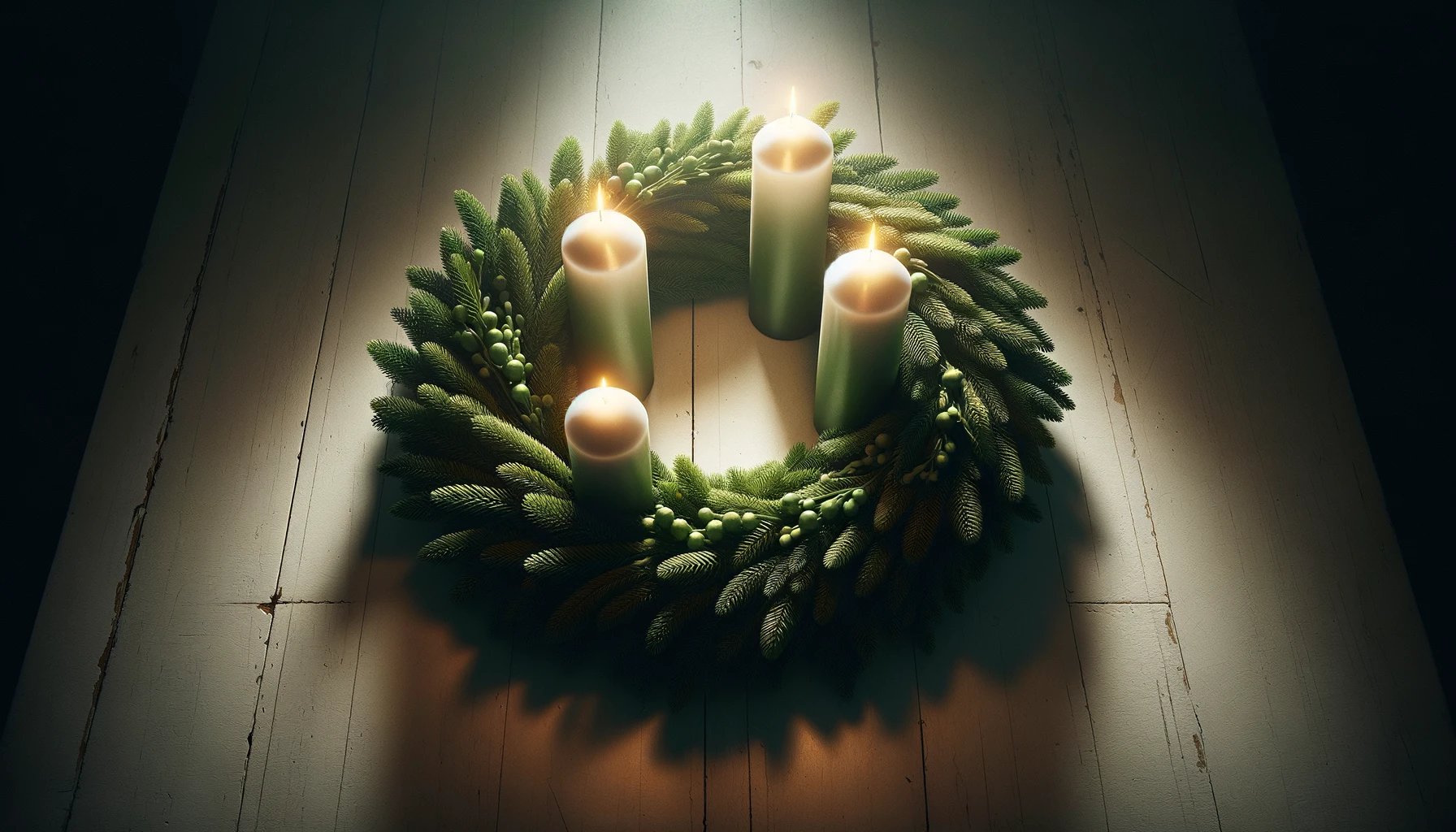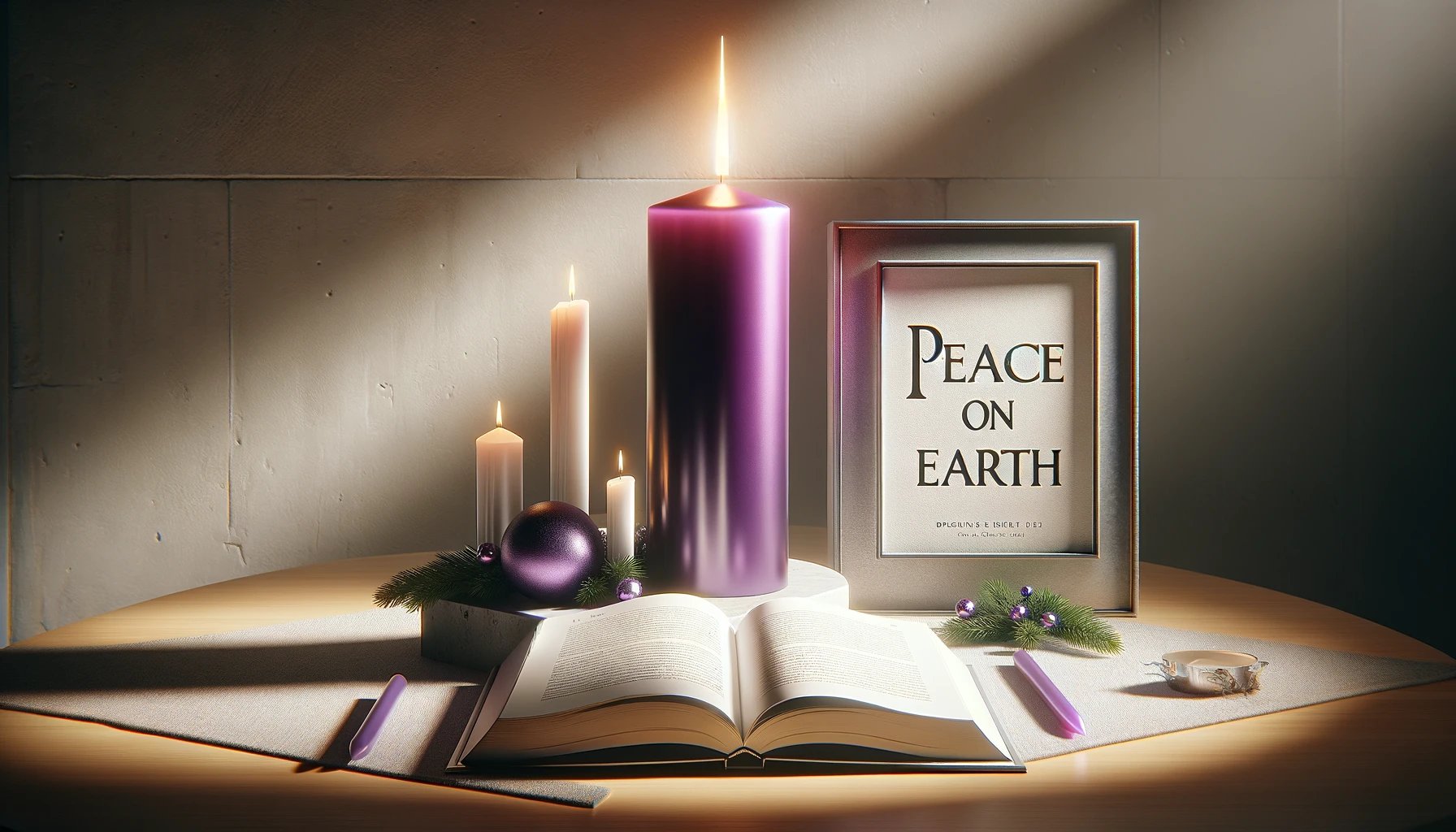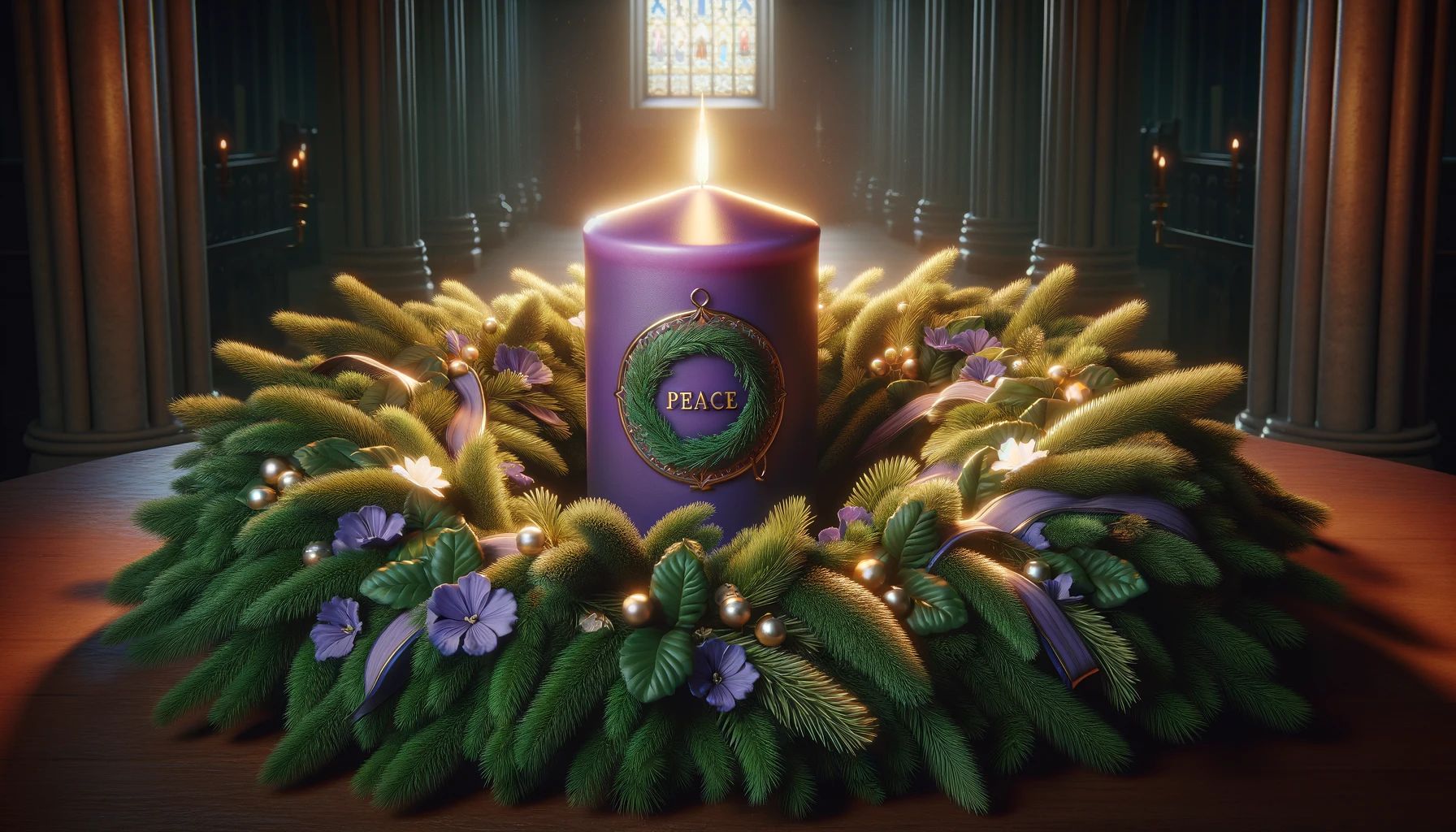Home>Special Themes>Which Candle Is Lit On The Second Sunday Of Advent


Special Themes
Which Candle Is Lit On The Second Sunday Of Advent
Published: February 14, 2024
Peter Smith, Editorial Director at Christian.net, combines deep insights into faith, politics, and culture to lead content creation that resonates widely. Awarded for his contributions to religious discourse, he previously headed a major organization for religious communicators, enhancing dialogue on faith's societal impacts.
Discover the significance of the second Sunday of Advent and its special themes. Learn which candle is lit and the traditions associated with this important day.
(Many of the links in this article redirect to a specific reviewed product. Your purchase of these products through affiliate links helps to generate commission for Christian.net, at no extra cost. Learn more)
Table of Contents
Introduction
The tradition of lighting Advent candles holds a special place in the hearts of many, especially during the festive season. As the days grow shorter and the air becomes crisper, the lighting of these candles brings warmth and anticipation to the hearts of those who partake in this age-old custom. Each candle symbolizes a different aspect of the Advent season, leading up to the celebration of Christmas. In this article, we will delve into the significance of the second Sunday of Advent and explore the specific candle that is lit on this day.
The lighting of Advent candles is a cherished ritual that dates back centuries, with its roots deeply embedded in Christian traditions. This practice serves as a poignant reminder of the spiritual significance of the Advent season, fostering a sense of hope, peace, joy, and love as the world eagerly awaits the arrival of Christmas. As we embark on this exploration, we will uncover the rich symbolism and meaning behind the lighting of the second Advent candle and its role in preparing hearts and minds for the joyous celebration of Christ's birth.
The flickering flames of the Advent candles not only illuminate the physical space but also kindle a sense of spiritual reflection and contemplation. As we journey through the Advent season, the gentle glow of these candles serves as a beacon of hope, guiding us through the darkness and pointing towards the imminent arrival of the light of the world. With this understanding, let us embark on a meaningful exploration of the second Sunday of Advent and the profound significance of the candle that is lit on this momentous day.
Read more: In What Order Are Advent Candles Lit
The Tradition of Advent Candles
The tradition of Advent candles traces its origins to the early 19th century in Germany, where it emerged as a symbolic way to mark the four weeks leading up to Christmas. This practice quickly gained popularity and spread throughout the Christian community, evolving into a cherished custom that is observed with reverence and joy each year.
Typically, an Advent wreath serves as the focal point for the lighting of the candles. The wreath, often made of evergreen foliage, symbolizes eternal life and the unending love of God. Positioned within the wreath are four candles, each representing a different facet of the Advent season. Traditionally, three of the candles are purple, symbolizing penance and preparation, while the fourth candle is pink, signifying joy.
The lighting of the candles follows a specific sequence, with one candle being lit on each Sunday of Advent. As the weeks progress, an increasing number of candles are illuminated, heightening the sense of anticipation and spiritual reflection. The symbolism of the candles aligns with the themes of the Advent season, namely hope, peace, joy, and love, which are integral to the Christian faith.
The act of lighting the Advent candles is accompanied by prayers, readings, and reflections that center on the respective theme of each week. This ritual serves as a poignant reminder of the spiritual journey towards the celebration of Christ's birth and the anticipation of His second coming. The flickering flames of the candles evoke a sense of warmth and comfort, infusing the surroundings with a sacred ambiance that invites contemplation and reverence.
The tradition of Advent candles transcends denominational boundaries, uniting Christians in a shared observance that fosters a sense of community and spiritual solidarity. Families, congregations, and individuals alike partake in this meaningful ritual, finding solace and inspiration in the timeless symbolism of the candles.
As the Advent season unfolds, the tradition of lighting the candles serves as a steadfast beacon of faith, guiding hearts and minds towards the profound significance of Christmas. It is a tradition that embodies the essence of the season, encapsulating the anticipation, hope, and joy that permeate the hearts of believers as they prepare to welcome the birth of the Savior.
In essence, the tradition of Advent candles encapsulates the essence of the season, fostering a sense of spiritual contemplation, anticipation, and unity among believers as they journey towards the celebration of Christmas.
The Meaning of the Second Sunday of Advent
The second Sunday of Advent holds profound significance within the liturgical calendar, marking a pivotal juncture in the spiritual journey towards Christmas. As the weeks progress and the anticipation of Christ's birth intensifies, the focus shifts to the theme of peace. This theme is encapsulated in the lighting of the second Advent candle, often referred to as the "Peace Candle."
Amidst the hustle and bustle of the holiday season, the lighting of the Peace Candle serves as a poignant reminder of the tranquility and serenity that characterize the true essence of Christmas. It beckons believers to pause and reflect on the profound peace that emanates from the birth of Christ, transcending earthly circumstances and permeating the depths of the human soul.
The concept of peace, or "shalom" in Hebrew, extends far beyond the absence of conflict; it embodies a state of wholeness, harmony, and well-being. As the Peace Candle is kindled, its gentle glow illuminates the path towards inner tranquility and reconciliation, inviting individuals to seek peace within themselves and extend it to others.
The second Sunday of Advent beckons believers to contemplate the transformative power of peace, both on a personal level and within the broader scope of humanity. It serves as a call to action, inspiring individuals to become instruments of peace in a world often marred by discord and division.
The lighting of the Peace Candle resonates with timeless biblical passages that herald the advent of the Prince of Peace. It evokes the prophetic words of Isaiah, who foretold the coming of a child who would be called "Wonderful Counselor, Mighty God, Everlasting Father, Prince of Peace" (Isaiah 9:6). This profound proclamation encapsulates the essence of the second Sunday of Advent, as it heralds the arrival of the embodiment of peace and reconciliation.
Furthermore, the Peace Candle serves as a beacon of hope amidst the challenges and uncertainties that pervade the world. It symbolizes the unwavering assurance that, through the birth of Christ, a transcendent peace has been bestowed upon humanity, offering solace and restoration to all who embrace it.
In essence, the second Sunday of Advent and the lighting of the Peace Candle invite believers to embark on a profound journey of introspection, reconciliation, and active peacemaking. It serves as a poignant reminder of the transformative power of peace and the enduring significance of Christ's birth as the ultimate source of hope and harmony for all humanity.
Which Candle Is Lit on the Second Sunday of Advent
The second Sunday of Advent heralds the lighting of the second candle, often referred to as the "Peace Candle." This candle, typically positioned adjacent to the first candle representing hope, embodies the theme of peace, signifying a significant milestone in the Advent journey.
As the second week of Advent unfolds, the act of lighting the Peace Candle holds profound symbolism. Its flickering flame serves as a poignant reminder of the tranquility and harmony that permeate the true essence of Christmas. The gentle glow of the Peace Candle beckons believers to pause and reflect on the profound peace that emanates from the birth of Christ, transcending earthly circumstances and permeating the depths of the human soul.
The concept of peace, encapsulated in the lighting of the Peace Candle, extends far beyond the absence of conflict; it embodies a state of wholeness, harmony, and well-being. As the candle is kindled, its radiant light illuminates the path towards inner tranquility and reconciliation, inviting individuals to seek peace within themselves and extend it to others.
The second Sunday of Advent serves as a poignant reminder of the transformative power of peace, both on a personal level and within the broader scope of humanity. It inspires individuals to become instruments of peace in a world often marred by discord and division. The lighting of the Peace Candle resonates with timeless biblical passages that herald the advent of the Prince of Peace, evoking the prophetic words of Isaiah, who foretold the coming of a child who would be called "Wonderful Counselor, Mighty God, Everlasting Father, Prince of Peace" (Isaiah 9:6).
Furthermore, the Peace Candle serves as a beacon of hope amidst the challenges and uncertainties that pervade the world. It symbolizes the unwavering assurance that, through the birth of Christ, a transcendent peace has been bestowed upon humanity, offering solace and restoration to all who embrace it.
In essence, the second Sunday of Advent and the lighting of the Peace Candle invite believers to embark on a profound journey of introspection, reconciliation, and active peacemaking. It serves as a poignant reminder of the transformative power of peace and the enduring significance of Christ's birth as the ultimate source of hope and harmony for all humanity.
Conclusion
In conclusion, the tradition of lighting Advent candles, particularly the candle lit on the second Sunday of Advent, holds profound significance within the Christian faith. The act of kindling the Peace Candle serves as a poignant reminder of the transformative power of peace and the enduring hope that emanates from the birth of Christ. As the Advent season unfolds, the symbolism of the candles, including the Peace Candle, resonates deeply with believers, inviting them to embark on a journey of spiritual reflection, anticipation, and active engagement with the themes of hope, peace, joy, and love.
The lighting of the Peace Candle on the second Sunday of Advent encapsulates the timeless message of tranquility and reconciliation, inviting individuals to seek inner peace and extend it to others. It serves as a beacon of hope amidst the complexities of the modern world, reminding believers of the enduring promise of peace that accompanies the birth of Christ.
As we gather around the Advent wreath and partake in the ritual of lighting the candles, we are reminded of the profound significance of the season and the timeless truths it embodies. The tradition of Advent candles fosters a sense of unity and spiritual solidarity, transcending denominational boundaries and bringing believers together in a shared observance that kindles the flames of faith, hope, and love.
The second Sunday of Advent and the lighting of the Peace Candle beckon believers to embrace the transformative power of peace, both in their personal lives and within the broader tapestry of humanity. It serves as a call to action, inspiring individuals to become ambassadors of peace, reconciliation, and hope in a world yearning for healing and harmony.
As we journey through the Advent season, let us carry the radiant message of the Peace Candle in our hearts, becoming beacons of light and agents of peace in a world hungering for the transformative touch of Christ's love. May the gentle glow of the Peace Candle illuminate our paths, infusing our lives with the enduring promise of peace and the timeless hope that heralds the arrival of the Savior.
In essence, the lighting of the Peace Candle on the second Sunday of Advent serves as a poignant reminder of the profound peace that emanates from the birth of Christ, transcending earthly circumstances and permeating the depths of the human soul. It beckons believers to embrace the transformative power of peace and become instruments of hope and reconciliation in a world yearning for the enduring message of Christmas.















